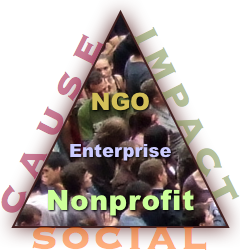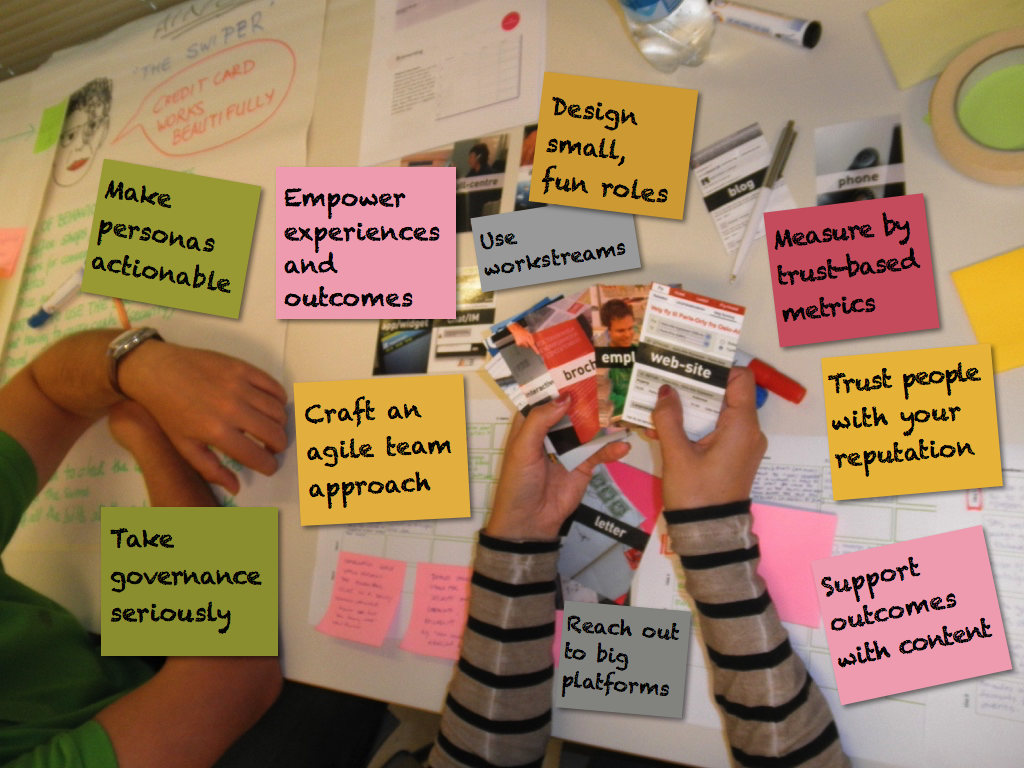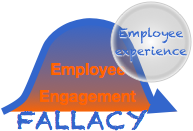How Poor Technical Communication Hurts Business reveals that firms regularly increase their customer service and marketing costs by sending inept letters, emails, technical instructions, and other communications to their customers and employees. It shows how they can increase profit by making these communications more user-centric.
 Banks, physicians, retailers, and many others routinely send poor instructional technical communications to their customers, resulting in high customer service costs, high return costs, high customer churn, and many related costs. These letters, emails, web pages, and other communications are produced by writers who show little insight into customers’ journeys that include the product or service. Banks, physicians, retailers, and many others routinely send poor instructional technical communications to their customers, resulting in high customer service costs, high return costs, high customer churn, and many related costs. These letters, emails, web pages, and other communications are produced by writers who show little insight into customers’ journeys that include the product or service.
The same problem occurs when firms communicate to their employees, and this results in employees’ anxiety and lost productivity (think about choosing your “benefits”) as well as HR staff time, IT staff time, management time, and employee dissatisfaction. It hurts the relationship that most employers try to develop with their employees.
[…]
 Nonprofits and experiential social media shares how nonprofits can improve their social media results and why I think experiential social media has an affinity for cause-focused organizations. This post was triggered by my insights from my recent research on nonprofits and cause-focused organizations. Although I’d served nonprofits throughout my consulting career, my focus was on commercial firms. While organizing Chicago Social Empowerment [Cohort One], I researched many nonprofits to distill the cohort’s categories, so I learned more about nonprofit operations and business models. Nonprofits and experiential social media shares how nonprofits can improve their social media results and why I think experiential social media has an affinity for cause-focused organizations. This post was triggered by my insights from my recent research on nonprofits and cause-focused organizations. Although I’d served nonprofits throughout my consulting career, my focus was on commercial firms. While organizing Chicago Social Empowerment [Cohort One], I researched many nonprofits to distill the cohort’s categories, so I learned more about nonprofit operations and business models.
First, I’ll share some broad insights about nonprofit operations and business models, specifically focusing on their stakeholders, and broad guidance for improving their results with social media. Then I’ll share insights about experiential social media and why I hypothesize that it has a special affinity for nonprofits.
For brevity, I’ll also use “nonprofit” to refer to social enterprises and other cause-focused organizations.
[…]
 Customer experience and experiential social media shows how you can succeed in transforming your customers’ experiences with your firm by adopting a refreshing and effective human approach. Transforming customer experience enables most firms to become more resilient and profitable. Customer experience and experiential social media shows how you can succeed in transforming your customers’ experiences with your firm by adopting a refreshing and effective human approach. Transforming customer experience enables most firms to become more resilient and profitable.
If you’d like to watch this post instead of reading it, click the thumbnail button.
[…]
 Customer success and experiential social media identifies three pitfalls that too often prevent customer success initiatives from attaining their potential for improving customer experience. In case you’re not familiar with the customer success movement, I outline its origins and scope, so you can appreciate the pitfalls and avoid them. Customer success and experiential social media identifies three pitfalls that too often prevent customer success initiatives from attaining their potential for improving customer experience. In case you’re not familiar with the customer success movement, I outline its origins and scope, so you can appreciate the pitfalls and avoid them.
If you’d like to watch this post instead of reading it, just click its thumbnail.
[…]
 How CSRA Builds Trust at Scale shares some of the most surprising and useful things I’ve learned while pioneering experiential social media since 2006. In this post, I’ll reveal how experiential social media teams build trust by breaking some rules in social media. How CSRA Builds Trust at Scale shares some of the most surprising and useful things I’ve learned while pioneering experiential social media since 2006. In this post, I’ll reveal how experiential social media teams build trust by breaking some rules in social media.
If you’d like to watch this post instead of reading it, click the thumbnail button!
[…]
Social media strategy good practices is a short list of principles that can make your firm stand out when empowering customer and employee experience. It’s part of a talk I gave today to a large multidisciplinary team. Their venerable institution plans to use social media strategy to get the ducks in a row without too much squawking. The most exciting aspect of social media strategy is that there’s so much room for improvement: while your peers and competitors are trying to “engage” with finely crafted-yet-impersonal content, you can power past them using experiential social media, which focuses on scalable interaction.

Here are the cliff notes to the good practices part of our discussion:
[…]
 The connected car and customer experience reveals a new opportunity for carmakers to dial into real customer behavior and desires around connected cars and autonomous cars. The Connected car and the autonomous car are powerful services that will help transform how people move around, and they are emerging during an era of unprecedented volatility in markets. I’ll wager that there’s never been a better or more challenging time to be a carmaker because opportunities and threats have never been higher. I’ve been fortunate to meet product managers and engineers who are pioneering connected and autonomous car services. I’ve also been meeting leaders in the Internet of Things (smart devices), of which the connected car is a part. The connected car and customer experience reveals a new opportunity for carmakers to dial into real customer behavior and desires around connected cars and autonomous cars. The Connected car and the autonomous car are powerful services that will help transform how people move around, and they are emerging during an era of unprecedented volatility in markets. I’ll wager that there’s never been a better or more challenging time to be a carmaker because opportunities and threats have never been higher. I’ve been fortunate to meet product managers and engineers who are pioneering connected and autonomous car services. I’ve also been meeting leaders in the Internet of Things (smart devices), of which the connected car is a part.
My crystal ball says that the connected car is a bet-the-brand proposition for carmakers because it directly addresses competing on customer experience, the most disruptive trend of all. As I detailed in The Social Channel, we have moved from a product/service-based economy toward an experience economy. Even IT analyst Gartner has proclaimed that customer experience is the final battleground for firms. […]
 Ethnographic research for product management shows how to apply ethnographic research of social media to managing the life cycle of products and services. Ethnographic research of social media can revolutionize product management because it’s a very efficient way to study people’s behavior and motivations in each part of the product life cycle. Unlike traditional product and ethnographic research methods, which are relatively slow, costly and qualitative, ethnographic research of social media combines qualitative richness with quantitative analysis. It’s faster and less costly, too. Ethnographic research for product management shows how to apply ethnographic research of social media to managing the life cycle of products and services. Ethnographic research of social media can revolutionize product management because it’s a very efficient way to study people’s behavior and motivations in each part of the product life cycle. Unlike traditional product and ethnographic research methods, which are relatively slow, costly and qualitative, ethnographic research of social media combines qualitative richness with quantitative analysis. It’s faster and less costly, too.
This post outlines the product management use case of ethnographic research of social media. For more on ethnographic research, see its executive summary.
[…]
 The Employee Engagement Fallacy reveals that most literature, papers, and methods are built on faulty Industrial Economy employment attitudes, and it provides an approach that uses experiential social media to help reframe employment and performance. The Employee Engagement Fallacy reveals that most literature, papers, and methods are built on faulty Industrial Economy employment attitudes, and it provides an approach that uses experiential social media to help reframe employment and performance.
Although the idea of “employee engagement” can be a rare opportunity to increase competitiveness, its practice is compromised by well intended but flawed logic.
Here’s the fallacy: Employee “engagement” is the result of employees’ experiences while they’re working at employers. Few engagement programs focus on employees’ experiences, so they fall short.
Engagement is not achieved by a program or initiative that focuses on the outcome. Employers see much more success at achieving the result when they focus on empowering the experiences their employees want when they decide to work at the employer. Experience is the motor of engagement, so empowering experience is the first step of raising productivity and lowering employment costs, two common employee engagement goals. Here’s how it’s done.
[…]
 Experiential Social Media and Business Intimacy shows how social media grounded in customer experience holds the key to trust, relationship and profit. When businesses discover, invite, and build trusted relationships with people in digital public, their actions speak loudly to the silent, ten times larger audience that’s observing the process. In addition, “accidents” are the express lane to developing trust and business intimacy. Experiential Social Media and Business Intimacy shows how social media grounded in customer experience holds the key to trust, relationship and profit. When businesses discover, invite, and build trusted relationships with people in digital public, their actions speak loudly to the silent, ten times larger audience that’s observing the process. In addition, “accidents” are the express lane to developing trust and business intimacy.
“Customer experience” directly leads to customer preference and more share of wallet, although most business owners and executives dismiss it as a buzzword. As practiced by CSRA since 2006, experiential social media is a group of practices that deepen intimacy with customers and increase profit. “Social” information is the currency of business intimacy. Here I’ll outline how this enchilada rolls, so you can begin to use experiential to increase customers’ value and your profit.
[…]
|
|
 Banks, physicians, retailers, and many others routinely send poor instructional technical communications to their customers, resulting in high customer service costs, high return costs, high customer churn, and many related costs. These letters, emails, web pages, and other communications are produced by writers who show little insight into customers’ journeys that include the product or service.
Banks, physicians, retailers, and many others routinely send poor instructional technical communications to their customers, resulting in high customer service costs, high return costs, high customer churn, and many related costs. These letters, emails, web pages, and other communications are produced by writers who show little insight into customers’ journeys that include the product or service.
 Nonprofits and experiential social media shares how nonprofits can improve their social media results and why I think experiential social media has an affinity for cause-focused organizations. This post was triggered by my insights from my recent research on nonprofits and cause-focused organizations. Although I’d served nonprofits throughout my consulting career, my focus was on commercial firms. While organizing Chicago Social Empowerment [Cohort One], I researched many nonprofits to distill the cohort’s categories, so I learned more about nonprofit operations and business models.
Nonprofits and experiential social media shares how nonprofits can improve their social media results and why I think experiential social media has an affinity for cause-focused organizations. This post was triggered by my insights from my recent research on nonprofits and cause-focused organizations. Although I’d served nonprofits throughout my consulting career, my focus was on commercial firms. While organizing Chicago Social Empowerment [Cohort One], I researched many nonprofits to distill the cohort’s categories, so I learned more about nonprofit operations and business models. Customer experience and experiential social media shows how you can succeed in transforming your customers’ experiences with your firm by adopting a refreshing and effective human approach. Transforming customer experience enables most firms to become more resilient and profitable.
Customer experience and experiential social media shows how you can succeed in transforming your customers’ experiences with your firm by adopting a refreshing and effective human approach. Transforming customer experience enables most firms to become more resilient and profitable. Customer success and experiential social media identifies three pitfalls that too often prevent customer success initiatives from attaining their potential for improving customer experience. In case you’re not familiar with the customer success movement, I outline its origins and scope, so you can appreciate the pitfalls and avoid them.
Customer success and experiential social media identifies three pitfalls that too often prevent customer success initiatives from attaining their potential for improving customer experience. In case you’re not familiar with the customer success movement, I outline its origins and scope, so you can appreciate the pitfalls and avoid them. How CSRA Builds Trust at Scale shares some of the most surprising and useful things I’ve learned while pioneering experiential social media since 2006. In this post, I’ll reveal how experiential social media teams build trust by breaking some rules in social media.
How CSRA Builds Trust at Scale shares some of the most surprising and useful things I’ve learned while pioneering experiential social media since 2006. In this post, I’ll reveal how experiential social media teams build trust by breaking some rules in social media.
 The connected car and customer experience reveals a new opportunity for carmakers to dial into real customer behavior and desires around connected cars and autonomous cars. The Connected car and the autonomous car are powerful services that will help transform how people move around, and they are emerging during an era of unprecedented volatility in markets. I’ll wager that there’s never been a better or more challenging time to be a carmaker because opportunities and threats have never been higher. I’ve been fortunate to meet product managers and engineers who are pioneering connected and autonomous car services. I’ve also been meeting leaders in the Internet of Things (smart devices), of which the connected car is a part.
The connected car and customer experience reveals a new opportunity for carmakers to dial into real customer behavior and desires around connected cars and autonomous cars. The Connected car and the autonomous car are powerful services that will help transform how people move around, and they are emerging during an era of unprecedented volatility in markets. I’ll wager that there’s never been a better or more challenging time to be a carmaker because opportunities and threats have never been higher. I’ve been fortunate to meet product managers and engineers who are pioneering connected and autonomous car services. I’ve also been meeting leaders in the Internet of Things (smart devices), of which the connected car is a part. Ethnographic research for product management shows how to apply ethnographic research of social media to managing the life cycle of products and services. Ethnographic research of social media can revolutionize product management because it’s a very efficient way to study people’s behavior and motivations in each part of the product life cycle. Unlike traditional product and ethnographic research methods, which are relatively slow, costly and qualitative, ethnographic research of social media combines qualitative richness with quantitative analysis. It’s faster and less costly, too.
Ethnographic research for product management shows how to apply ethnographic research of social media to managing the life cycle of products and services. Ethnographic research of social media can revolutionize product management because it’s a very efficient way to study people’s behavior and motivations in each part of the product life cycle. Unlike traditional product and ethnographic research methods, which are relatively slow, costly and qualitative, ethnographic research of social media combines qualitative richness with quantitative analysis. It’s faster and less costly, too. Experiential Social Media and Business Intimacy shows how social media grounded in customer experience holds the key to trust, relationship and profit. When businesses discover, invite, and build trusted relationships with people in digital public, their actions speak loudly to the silent, ten times larger audience that’s observing the process. In addition, “accidents” are the express lane to developing trust and business intimacy.
Experiential Social Media and Business Intimacy shows how social media grounded in customer experience holds the key to trust, relationship and profit. When businesses discover, invite, and build trusted relationships with people in digital public, their actions speak loudly to the silent, ten times larger audience that’s observing the process. In addition, “accidents” are the express lane to developing trust and business intimacy.